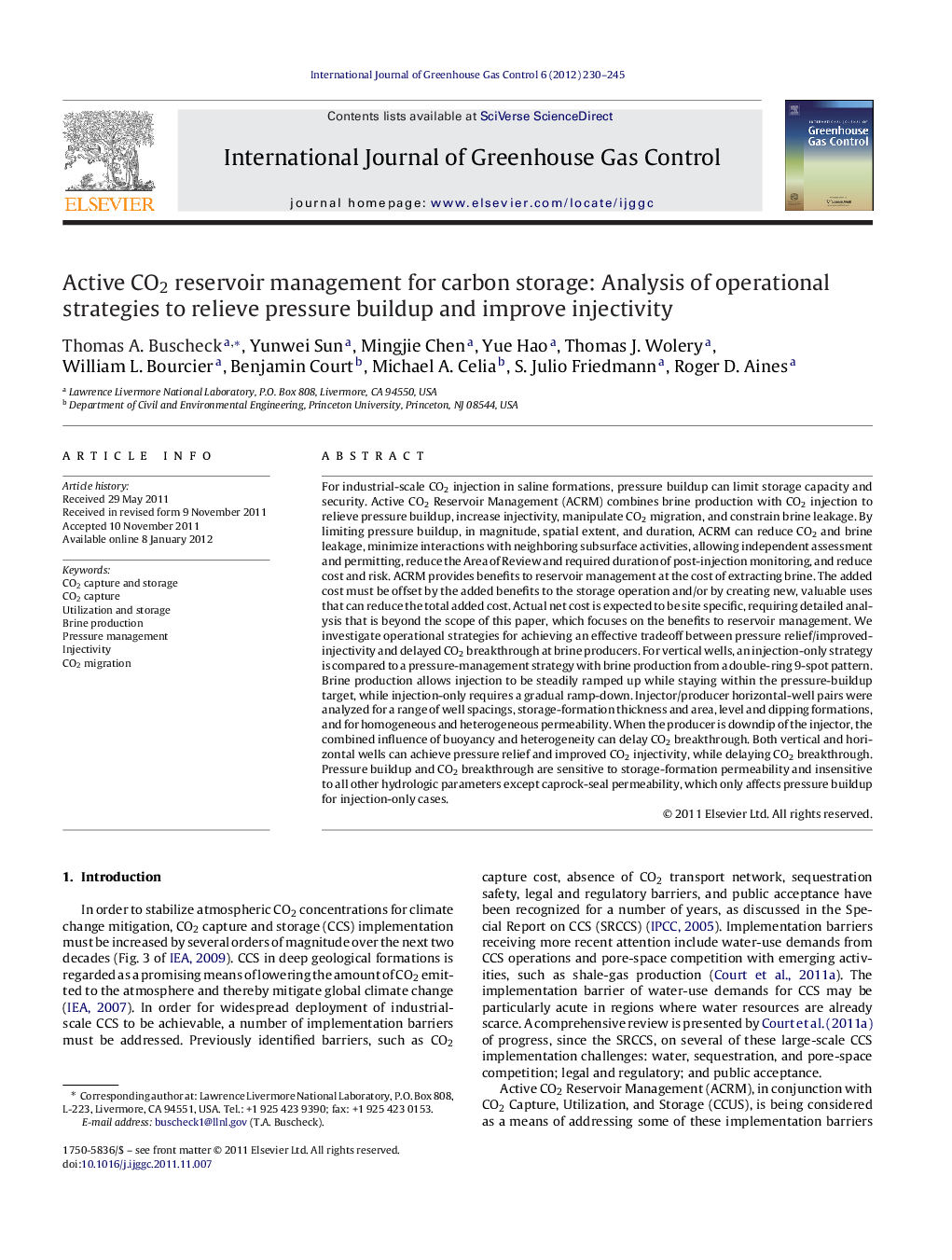| کد مقاله | کد نشریه | سال انتشار | مقاله انگلیسی | نسخه تمام متن |
|---|---|---|---|---|
| 1743491 | 1522017 | 2012 | 16 صفحه PDF | دانلود رایگان |

For industrial-scale CO2 injection in saline formations, pressure buildup can limit storage capacity and security. Active CO2 Reservoir Management (ACRM) combines brine production with CO2 injection to relieve pressure buildup, increase injectivity, manipulate CO2 migration, and constrain brine leakage. By limiting pressure buildup, in magnitude, spatial extent, and duration, ACRM can reduce CO2 and brine leakage, minimize interactions with neighboring subsurface activities, allowing independent assessment and permitting, reduce the Area of Review and required duration of post-injection monitoring, and reduce cost and risk. ACRM provides benefits to reservoir management at the cost of extracting brine. The added cost must be offset by the added benefits to the storage operation and/or by creating new, valuable uses that can reduce the total added cost. Actual net cost is expected to be site specific, requiring detailed analysis that is beyond the scope of this paper, which focuses on the benefits to reservoir management. We investigate operational strategies for achieving an effective tradeoff between pressure relief/improved-injectivity and delayed CO2 breakthrough at brine producers. For vertical wells, an injection-only strategy is compared to a pressure-management strategy with brine production from a double-ring 9-spot pattern. Brine production allows injection to be steadily ramped up while staying within the pressure-buildup target, while injection-only requires a gradual ramp-down. Injector/producer horizontal-well pairs were analyzed for a range of well spacings, storage-formation thickness and area, level and dipping formations, and for homogeneous and heterogeneous permeability. When the producer is downdip of the injector, the combined influence of buoyancy and heterogeneity can delay CO2 breakthrough. Both vertical and horizontal wells can achieve pressure relief and improved CO2 injectivity, while delaying CO2 breakthrough. Pressure buildup and CO2 breakthrough are sensitive to storage-formation permeability and insensitive to all other hydrologic parameters except caprock-seal permeability, which only affects pressure buildup for injection-only cases.
► ACRM utilizes brine production to increase CO2 injectivity and storage capacity.
► ACRM limits interference with other subsurface operations, allowing close spacing.
► ACRM nearly eliminates post-injection pressure buildup and outward brine migration.
► Horizontal producers enable CO2-plume control, particularly in dipping formations.
► ACRM-enabled increased CO2 storage capacity allows greater CCS site selectivity.
Journal: International Journal of Greenhouse Gas Control - Volume 6, January 2012, Pages 230–245